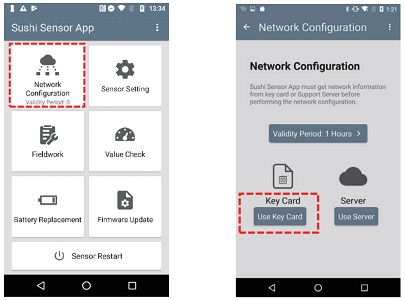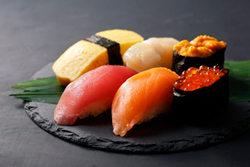Leverage of Remote Asset Monitoring
Don’t you entrust equipment maintenance solely to operator rounds? There is a limit to monitoring all the equipment deployed across a large plant.
Why don’t you to remotely monitor the condition of the equipment instead of having operator rounds throughout the plant? Most operator rounds simply verify that the equipment works normally. By being able to monitor the condition of equipment remotely at all times, you can inspect specific equipment that shows anomaly in advance without having to visit a site, thus improving efficiency. However, remote monitoring requires IT technology to cover a wide range of factories and centrally manage them. Therefore, realizing remote asset monitoring is a challenge due introducing the necessary IT technology.
Challenges in Deploying Remote Asset Monitoring
- Many monitoring points deployed over a wide area.
- Mounting sensors hazardous or difficult-to-access locations.
- Saving time: Large number of installation and configuration tasks, including power and communication wiring
Industrial IoT Solutions Using Sushi Sensor for Remote Asset Monitoring
Yokogawa advocates Industrial IoT Wireless Solutions.
We offer remote monitoring using the IoT technology in Sushi Sensor.
- Uses the LoRaWAN® wireless standard for long-distance communication
- Water and dust proof, and explosion proof
- Battery-powered sensor equipped with wireless communication
Benefits of Remote Asset Monitoring
- Monitor the condition and health of equipment constantly without having to be in the site.
- Detect "something wrong" before the equipment shows an abnormal value to know when maintenance and inspection is necessary, and respond to problems quickly.
- Know the "signs" and respond early—shorten downtime from sudden shutdowns and malfunctions, minimize waste due to equipment failure or deterioration in product quality, and increase efficiency in equipment maintenance and production.
Contributing to Reducing Greenhouse Gas (GHG) Emissions
A new monitoring device has been added to Sushi Sensor portfolio due to detect the condition of steam traps in steam systems. Increased frequency monitoring of steam trap conditions enables optimal maintenance opportunities, allowing for efficient repairs or replacements. This contributes to the reduction of greenhouse gas (GHG) emissions.
*A steam trap is an equipment that properly discharges the condensate and the air from steam systems in plants.
Please click here for more details on Sushi Sensor.
Note: Sushi Sensor is sold in different regions for each product.
Please check general specification for details.

-
เซ็นเซอร์ความดันไร้สาย
This product acts as a battery-powered wireless pressure sensor, and it is suitable for Industrial IoT (IIoT) applications. Wireless Pressure Sensor has the function of measuring the gauge pressure of gases and liquids in a piping.
-
เซ็นเซอร์อุณหภูมิไร้สาย
ผลิตภัณฑ์นี้ทำหน้าที่เป็นเซ็นเซอร์วัดอุณหภูมิแบบไร้สายที่ใช้แบตเตอรี่และเหมาะสำหรับการใช้ เทคโนโลยีอินเตอร์เน็ตที่เชื่อมอุปกรณ์ทางอุตสาหกรรม (Industrial IoT) (IIoT) เซนเซอร์วัดอุณหภูมิแบบไร้สายรองรับ 2 อินพุตของเทอร์โมคัปเปิลมาตรฐาน IEC (ประเภทใดก็ได้ 9 ประเภทรวมถึง Type B, E, J)
-
เซนเซอร์วัดการสั่นแบบไร้สาย
ผลิตภัณฑ์นี้ทำหน้าที่เป็นเซ็นเซอร์ตรวจจับการสั่นสะเทือนแบบไร้สายที่ใช้แบตเตอรี่และเหมาะสำหรับการใช้ เทคโนโลยีอินเตอร์เน็ตที่เชื่อมอุปกรณ์ทางอุตสาหกรรม (Industrial IoT) (IIoT) เซนเซอร์วัดการสั่นแบบไร้สาย วัดการสั่นสะเทือนตามแกน X, Y และ Z นอกเหนือจากการตรวจสอบอุณหภูมิพื้นผิว
-
อุปกรณ์ตรวจสอบกับดักไอน้ำแบบไร้สาย
ผลิตภัณฑ์นี้ทำหน้าที่เป็นอุปกรณ์ตรวจสอบกับดักไอน้ำแบบไร้สายที่ใช้พลังงานจากแบตเตอรี่ และเหมาะสำหรับการใช้งาน เทคโนโลยีอินเตอร์เน็ตที่เชื่อมอุปกรณ์ทางอุตสาหกรรม (Industrial IoT) (IIoT) อุปกรณ์ตรวจสอบกับดักไอน้ำแบบไร้สายจะตรวจจับสภาพของกับดักไอน้ำโดยใช้เซ็นเซอร์เสียงและเซ็นเซอร์อุณหภูมิ
รายละเอียด
News & Topics
Wireless Steam Trap Sensor has been awarded the Silver Award in the Control Engineering 2025 Product of the Year competition.
> Control Engineering (external site)
Sushi Sensor คืออะไร?
To improve the availability ratio and profitability of plants, timely identification of health conditions and efficient maintenance of aged equipment are required. Various sensing technologies are needed to monitor conditions and maintain diverse equipment. In order to maintain equipment distributed across a plant efficiently with limited man-hours, quantification of measurement data and automated data acquisition and storage systems are required. Sushi Sensor monitors vibration, temperature, and pressure as data and detects the condition of steam traps for inviting the maintenance of the equipment. The monitored sensor data and detected conditions are stored in host systems such as the cloud or the on-premises via wireless communication.
Since Sushi Sensor complies with LoRaWAN®, which is a low-power wide-area (LPWA) network for long-distance communication, the Sushi Sensor can be deployed anywhere in a plant and cover a vast area. Also, it has environmental resistance features to support heavy-duty use (IP66/67, explosion proof).
Users can identify equipment conditions by trend monitoring in the cloud or the on-premises, and then plan and perform maintenance efficiently, tailored to the equipment conditions. Comprehensive monitoring the condition of the whole plant helps create priorities of equipment risks and maximize investment in equipment maintenance in a balanced manner.

การกำหนดค่าระบบ
คุณสมบัติ
[Easy Installation]
- เซ็นเซอร์ขนาดกะทัดรัดน้ำหนักเบาใช้พลังงานจากแบตเตอรี่
- ใช้งานได้ในสภาพแวดล้อมที่รุนแรงรวมถึงพื้นที่อันตราย (กันน้ำป้องกันฝุ่นและป้องกันการระเบิด)
- The LoRaWAN® standard enables long-distance communication of up to 1 km, and thus flexible installation.
[Easy Setting]
- สามารถตั้งค่าพารามิเตอร์ด้วยสมาร์ทโฟนผ่านการสื่อสารระยะใกล้ (NFC)
[Easy Data Collection and Monitoring]
- สามารถรวบรวมข้อมูลได้ในพื้นที่กว้างผ่านการสื่อสารไร้สายทางไกล
- ข้อมูลที่รวบรวมสามารถเข้าถึงได้จากแอปพลิเคชันของผู้ใช้ในระบบคลาวด์

สิทธิประโยชน์
(การแปลงเป็นดิจิทัล) การตรวจจับ
Sushi Sensor monitors vibration, temperature, and pressure and detects the conditions of steam traps as data for maintaining equipment. The monitored sensor data and conditions are stored in host systems such as the cloud or the on-premises via wireless communication.
(Digitalizing) Sensemaking
ผู้ใช้สามารถระบุสภาพอุปกรณ์โดยการตรวจสอบแนวโน้มในระบบคลาวด์หรือในสถานที่จากนั้นวางแผนและดำเนินการบำรุงรักษาอย่างมีประสิทธิภาพโดยปรับให้เข้ากับสภาพของอุปกรณ์
(DX)การเปลี่ยนแปลงทางดิจิทัล
Comprehensive monitoring the conditions of the whole plant helps create priorities of equipment risks and maximize investment in equipment maintenance in a balanced manner. For this purpose, quantification of measurement data and automated data acquisition and storage systems are required.
How Does Sushi Sensor Realize DX?
[Effects of Sensing and Sensemaking]
- Reduce inspection man-hours by automatically collecting data on equipment (even in high and hazardous areas) in online
- Quantify and visualize inspection results that depend on individual experience, intuition, and on-site know-how
- Reduce variance in inspection quality due to differences in staff skill
- Enable early detection of abnormal signs ("something wrong") and avoid oversight by trend monitoring of equipment
- Conserve steam and energy by detecting the condition of steam traps and maintain them efficiently
[Effects of Digital Transformation]
1) When an anomaly is detected by a simple diagnosis, the operator performs a detailed diagnosis and identifies the cause of failure.
2) Based on the results, the operator determines the appropriate next action and schedule of maintenance.
Where:
Simple diagnosis: Monitor trends of equipment and detect “abnormal sign” by Sushi Sensor.
Detailed diagnosis: Assess the cause of abnormal sign or failure by portable measurement instrument by the operator.
The operator can focus on value-adding tasks such as detailed diagnostics and determining next steps. Sushi Sensor detects signs of abnormalities and contributes to CBM.
Why is it Called "Sushi Sensor" ?
Sushi Sensor is named after sushi, a hand-pressed traditional Japanese food which combines rice with various toppings.
- Like sushi is easy to eat, Sushi Sensor can be easily installed.
- Like skilled professionals prepare sushi, Sushi Sensor is a robust, finely-crafted product.
- Like sushi comes with various toppings, various kinds of sensors are being developed for Sushi Sensor.

โยโกกาวา สนับสนุน APM
โยโกกาวา เพิ่มมูลค่าอุปกรณ์ของลูกค้าผ่านการจัดการประสิทธิภาพสินทรัพย์ (APM)
เพื่อเพิ่มมูลค่าของอุปกรณ์ APM มุ่งเน้นไปที่ความพร้อมใช้งานของอุปกรณ์และประเมินประสิทธิภาพของอุปกรณ์ เพื่อเพิ่มประสิทธิภาพสูงสุด APM ควรดำเนินการไม่เพียง แต่ในการบำรุงรักษา แต่ยังรวมถึงการดำเนินงานและพื้นที่อื่น ๆ ที่ต้องร่วมมือกันในการบำรุงรักษาและการดำเนินงานเพื่อเสริมซึ่งกันและกัน
ตามปกติแล้วระบบปฏิบัติการในโรงงานมีเป้าหมายเพื่อปรับปรุงประสิทธิภาพการผลิตและคุณภาพของผลิตภัณฑ์ในขณะที่ระบบบำรุงรักษาอุปกรณ์มีเป้าหมายเพื่อเพิ่ม ประสิทธิผลเชิงปฏิบัติการ และลดต้นทุน อย่างไรก็ตามเมื่อเพิ่มประสิทธิภาพการผลิตสูงสุดต้นทุนการบำรุงรักษาไม่จำเป็นต้องปรับให้เหมาะสม แม้ว่าข้อมูลการดำเนินงานและข้อมูลการบำรุงรักษาจะต้องรวมกันเพื่อเพิ่มผลกำไรสูงสุดให้กับโรงงานทั้งหมด แต่ก็ไม่ค่อยประสบความสำเร็จส่วนใหญ่เนื่องจากการบำรุงรักษาไม่ได้เป็นเชิงปริมาณเสมอไป
เพื่อแก้ปัญหานี้ โยโกกาวา ได้พัฒนา Sushi Sensor ซึ่งประกอบด้วยเซ็นเซอร์ที่รวบรวมข้อมูลพื้นฐานสำหรับการบำรุงรักษาอุปกรณ์และฟังก์ชันต่างๆที่วัดปริมาณสะสมและวิเคราะห์ข้อมูลเหล่านี้ทำให้ผู้ปฏิบัติงานสามารถทำการตัดสินตามวัตถุประสงค์ได้
Sushi Sensor เสริมสร้างการทำงานร่วมกันระหว่างระบบปฏิบัติการและระบบบำรุงรักษาอุปกรณ์บรรลุ APM ที่ปรับทุกขั้นตอนตั้งแต่การตรวจจับสภาพอุปกรณ์โดยเซ็นเซอร์ไปจนถึงการตัดสินใจในการดำเนินการที่เหมาะสมโดยผู้ปฏิบัติงาน
APM ของ Yokogawa ไม่เพียงเพิ่มประสิทธิภาพการบำรุงรักษาอุปกรณ์ แต่ยังช่วยปรับปรุงการทำงานของโรงงานทั้งหมด
การทำงานร่วมกันระหว่างการปฏิบัติงานและการบำรุงรักษาอุปกรณ์

แหล่งข้อมูล
Kyowa Hakko Bio ติดตามแนวโน้มการสั่นสะเทือนด้วย Sushi Sensors ของ โยโกกาวา เพื่อป้องกันความล้มเหลวของอุปกรณ์โดยไม่คาดคิด
เมื่อใช้ eServ ข้อมูลเซ็นเซอร์และข้อมูลการบำรุงรักษาจะถูกแชร์กับทุกคนที่เกี่ยวข้องในการผลิต
Osaka Metro เลือก Sushi Sensor ของ โยโกกาวา เพื่อตรวจสอบการสั่นสะเทือนของเครื่องช่วยหายใจขนาดใหญ่
การตรวจสอบแนวโน้มการสั่นสะเทือนช่วยป้องกันความล้มเหลวของระบบปรับอากาศในสถานีรถไฟใต้ดินโดยไม่คาดคิด
Remote monitoring of supply pump conditions in the agitation process reduces operator rounds and contributes to stabilization of the product quality.
ดาวน์โหลด
โบรชัวร์
คู่มือการใช้งาน
- Sushi Sensor Series Software Edition (5.1 MB)
- XS822 Steam Trap Monitoring Module (1.5 MB)
- XS110A Wireless Communication Module (1.8 MB)
ข้อกำหนดทั่วไป
- XS822 Steam Trap Monitoring Module (1.0 MB)
วิดีโอ
ในโรงงาน ความล้มเหลวของกับดักไอน้ำไม่เพียงแต่ทำให้ประสิทธิภาพความร้อนของไอน้ำลดลง แต่ยังทำให้เกิดความเสี่ยงต่อความเสียหายและอุบัติเหตุในระบบไอน้ำอีกด้วย
เซ็นเซอร์แสดงภาพสภาพของกับดักไอน้ำและรองรับการบริหารจัดการที่ปลอดภัย
ในโรงงาน มีความเสี่ยงที่จะสูญเสียไอน้ำจำนวนมาก เนื่องจากกับดักไอน้ำเสียหาย
โซลูชันไร้สาย IoT ทางอุตสาหกรรม Sushi Sensor รองรับการตรวจสอบพลังงานด้วยการแสดงภาพสภาพของกับดักไอน้ำ
ข่าวสาร
-
Press Release | Solutions & Products Jul 20, 2020 โยโกกาวา เตรียมขยาย เทคโนโลยีอินเตอร์เน็ตที่เชื่อมอุปกรณ์ทางอุตสาหกรรม (Industrial IoT) ไร้สายของ Sushi Sensor ในยุโรป อเมริกาเหนือ และเอเชียตะวันออกเฉียงใต้
- เซ็นเซอร์ใหม่ช่วยให้สามารถรวบรวมข้อมูลความดันและอุณหภูมิแบบออนไลน์ได้อย่างง่ายดาย -
คุณต้องการข้อมูลเพิ่มเติมเกี่ยวกับบุคลากร เทคโนโลยี และโซลูชั่นของเราหรือไม่ ?
ติดต่อเรา













